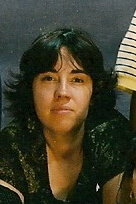In this excerpt, Jesus (from Guatemala and who came to the U.S. when he was a pre-adolescent) remembers one of the stories about Quetzalcoatl that he told in sign language (italics) to his eight-year-old deaf nephew Juan (born and raised in the U.S.). While the Popol Vu, the religious manuscript of the Mayans, relates stories of “the feathered serpent,” in this narration Jesus fuses the legend with his own imagination of how Quetzalcoatl was created.
I climb the next crest to a sweeping view of the Pacific. The land cuts a deep ravine and the trail winds around it. Sharp cliffs plunge a hundred feet toward the water. The sea is gray green. Surf breaks against rock, spraying geysers, and surges swirling currents toward the shore. I balance on my haunches and look far out into the sea.
--Now I must tell you about Quetzacoatl. God and the Holy Spirit watched over their corn people. Once in a while the corn people would pause, look to the stars and say hmmm. God was reaching for them. But the monster snake, who was most cunning, would trick them. He would lure them to the cliff’s edge with his singing, “Naked and alone, we came into exile” and he had a good voice.
--Were they naked? asked Juan.
--No, it’s just the song he sang to trick them.
--But they don’t have to listen.
--But they did and some of them would throw themselves off the cliff even though they had clothes on and weren’t alone at all. They would break upon the rocks below, and when the tides came in, the snake monster would eat them.
--Is this a true story?
--It’s a story of the beginning. Now God descended to the bottom of the cliff. He descended like a man, hanging onto the ledges and sucking in his breath. At the bottom of the massive cliff, where waves pounded against the shore, he gathered up his corn people. He sat and cradled broken and crumbled man in his arms. The waves crashed against him. The salty water ran through his arms and softened the masa again. The seagulls descended. They were not afraid of God having lived with him forever. They ate the masa caked on his arms and chest and he stroked them with his hands, plucking a feather from each. Soon he had gathered handfuls of feathers. He stood, chest of masa, and waved the feathers in the air, “Come serpent!”
--Was God going to fight him?”
--Eventually. The seagulls called and the waves washed up. God waved the feathers. He was standing up on his feet and yelling out to the sea, “Come out you slithery snake!”
Now the water started to churn and foam, the waves got higher. The tail of the beast flipped into the air and then its head appeared. Giant yellow eyes sunk into its face and its mouth opened with fangs exposed. It drove towards the shore where God stood, waving the feathers and birds fleeing from his arms. “Come you slithery snake!”
Juan’s eyes were wide.
He caught that snake monster by the throat and pulled off his tail. The monster roared, and God threw it back into the sea.
--Did he kill it?
--No.
--Why?
--I don’t know. God stood there quivering with the snake tail, fists full of feathers and the masa of humanity on his chest. He turned to the Holy Spirit who was watching from the top of the cliff.
“Breathe on me!”
“Are you crazy?”
“It is the only way.” He opened his arms white feathered to the sun, tail glistening green and blue. “Breathe on me!”
The Spirit breathed on him, and God became a man.
The people called him Quetzalcoatl, the plumed serpent. I made the sign, the snake bird for Juanito.
--Weren’t the people scared of him?
--No. They were used to nahuales.
--What?
--An animal you want to change into.
--I want to be a frog.
--You can’t show it.
--Why not?
--It’s a secret, your nahual. That’s what the Indian people say and you are Indian.
--But I want two animals. I want to be a horse. A frog-horse.
I want to believe in a God like that. I wanted Juan to. The cold curls around my body. I gather the contents of my backpack and walk the long path back to the car.
